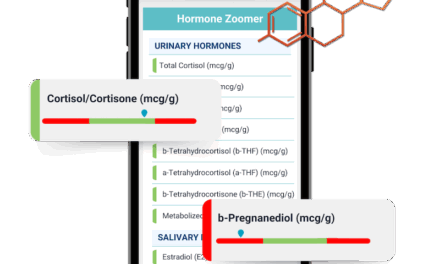Higher post-vasectomy semen analysis (PVSA) compliance rates lead to better clinical outcomes, enhancing the laboratory’s reputation and value to healthcare providers.
By James Smith, MD, MS
Summary:
Men often avoid reproductive health testing, including post-vasectomy semen analysis (PVSA), but mail-in testing kits with patient engagement strategies and high-complexity certifications can significantly improve compliance rates.
Takeaways:
- Low PVSA Compliance: In-clinic compliance rates are only about 30%, contributing to unintended pregnancies and delayed infertility diagnoses.
- Barriers to Testing: Embarrassment, scheduling conflicts, and transportation challenges deter men from undergoing reproductive health tests.
- Mail-in Solutions: Kits integrated with effective engagement strategies and CLIA high-complexity certification improve compliance and ensure clinically accurate results.
It’s a trope, but it’s true: Men will do almost anything to avoid going to the doctor, and the stats back up the punchline. A Cleveland Clinic study found that 72% of men would rather clean the bathroom than go to the doctor, and 41% were taught as children not to complain about health issues. It’s no surprise, then, that compliance rates in male reproductive health testing remains alarmingly low.
In the case of post-vasectomy semen analysis (PVSA), in-clinic compliance rates hover around 30%, leaving a substantial number of patients without confirmation of procedural success.[1] Fertility patients, while often more motivated to undergo testing, still face the inconvenient and uncomfortable process of producing semen samples at clinics, which can deter timely diagnosis.
While traditionally viewed as direct-to-consumer products, mail-in testing kits are an effective solution to compliance issues when they include effective patient engagement strategies and hold high-complexity CLIA certifications. These kits can be integrated seamlessly into laboratory workflows, reducing administrative strain on healthcare providers and improving patient compliance.
Compliance Rates Barriers
The American Urological Association guidelines strongly recommend PVSA for all patients undergoing vasectomy to ensure that the procedure has been effective in achieving sterility. With approximately 500,000 vasectomies are performed annually in the U.S., the low follow-up compliance rate underscores a critical gap in patient follow-through. Failure to confirm sterility can result in unintended pregnancies, with significant emotional and financial implications for individuals and couples. While exact figures are challenging to pinpoint, some studies suggest that vasectomy failure rates can be as high as 2.4%. This means approximately two to three in every 100 vasectomies could result in an unintended pregnancy if a PVSA is not performed and appropriate birth control measures are not taken.[2]
Meanwhile, male infertility has emerged as a significant global issue, with men contributing to nearly half of all infertility cases worldwide.[3] Subfertility has been estimated to affect 1 in 6 couples globally. This growing concern is underscored by a marked decline in sperm counts over recent decades, likely driven by environmental toxins, lifestyle shifts, and physiological conditions among other factors.[4]
Delays in testing can postpone the diagnosis of infertility issues, leading to missed opportunities for timely medical interventions and increasing stress within relationships. Additionally, the healthcare system bears increased costs and operational burdens associated with unintended pregnancies and prolonged infertility treatments.
Several barriers contribute to the low compliance rates in male reproductive health testing. One of the most significant factors is the embarrassment and anxiety many patients experience when asked to produce a semen sample in a public or clinical setting. As many lab professionals have witnessed, men are expected to provide samples in small, lab bathrooms, sometimes just steps away from where other patients are having blood drawn. In at least one instance, a patient resorted to producing a sample in his car, leading to security being called on him. Men deserve better, more dignified healthcare solutions that prioritize their comfort and well-being.
Traveling to a clinic for reproductive health testing can also pose significant challenges, including:
- Scheduling conflicts
- Transportation issues
- Time constraints
Clinics typically operate during standard business hours, which often conflict with patients’ work schedules. Individuals without reliable transportation or residing in rural and remote regions without access to specialized healthcare facilities may struggle to attend in-person appointments.
Mail-in testing helps overcome these barriers by allowing patients to collect samples conveniently and privately. However, mail-in testing alone is insufficient, as PVSA compliance improves to only about 50% with this approach.[5] Achieving higher adherence requires the integration of robust patient engagement strategies.
Effective Patient Engagement Improves Compliance Rates
Effective engagement strategies stand out as the biggest predictor of compliance rates. Several smaller clinics have increased PVSA compliance rates through consistent follow-ups, but this method is highly labor-intensive.[6]
Automated reminders from mail-in testing providers play a pivotal role in enhancing compliance without overburdening clinic staff. Fellow Health’s model, for example, incorporates regular outreach via patient-preferred channels, such as:
- Text messages
- Emails
- App notifications
Personalized reminders keep patients informed of deadlines, next steps, and any additional instructions.
In a study of more than 16,000 patients using Fellow Health’s PVSA kits, compliance rates reached 69% at 18 weeks and climbed to 82% at 40 weeks—far surpassing traditional models and other mail-in kits. These findings underscore the potential of combining mail-in testing with effective patient engagement to transform reproductive healthcare.[7]
High vs. Moderate Complexity
Due to the rapid degradation of sperm samples, it is crucial for mail-in fertility test providers to hold high-complexity lab developed test (LDT) CLIA certification, ensuring that their kits meet rigorous clinical standards equivalent to in-lab testing. Laboratories should be cautious of mail-in providers offering only moderate-complexity results that may not reflect true physiological values. The stringent nature of high-complexity certification—including regularly testing unknown samples to ensure accuracy, employing staff with higher levels of education, certification and training, implementing quality assurance programs, and ensuring equipment calibration—allows labs to be confident in the results.
For example, Fellow Health has earned high-complexity certification for its laboratory by implementing advanced processes that ensure accurate, clinically reliable results. In a peer-reviewed study involving 104 ejaculates from normo-spermic men, researchers conducted standard one-hour analyses and repeated tests over a 52-hour period using Fellow Health’s proprietary preservative solution. The results demonstrated that sperm concentration remained stable, while motility and normal morphology decreased predictably over time using this system. Strong correlations between the initial one-hour measurements and subsequent analyses indicated that Fellow’s mail-in system closely matches standard testing.[8]
Mail-in testing kits, when they include thoughtful engagement strategies and high complexity LDT CLIA certification, represent a powerful solution to the longstanding barriers that hinder compliance rates in male reproductive health testing. Higher compliance rates lead to better clinical outcomes, enhancing the laboratory’s reputation and value to healthcare providers. The healthcare community has the opportunity to set a new standard for compliance—one that empowers patients, supports providers, and drives meaningful improvements in reproductive health.
About the Author

James Smith, MD, MS, is chief medical officer at Fellow Health.
Featured Image: Idambeer | Dreamstime.com
References
[1] Diederichs J, McMahon P, Tomas J, Muller AJ. Reasons for not completing postvasectomy semen analysis. Fam Physician. 2019;65(9):e391-e396. PMID: 31515326; PMCID: PMC6741811.
[2] Coward RM, Badhiwala NG, Kovac JR, Smith RP, Lamb DJ, Lipshultz LI. Impact of the 2012 American Urological Association vasectomy guidelines on post-vasectomy outcomes. J Urol [Internet]. 2014;191(1):169-174. doi:10.1016/j.juro.2013.07.086. Accessed December 3, 2024.
[3] Leslie SW, Soon-Sutton TL, Khan MAB. Male infertility. StatPearls [Internet]. Treasure Island (FL): StatPearls Publishing; 2024 Jan-. Updated 2024 Feb 25. Available from: https://www.ncbi.nlm.nih.gov/books/NBK562258/
[4] Sciorio R, Tramontano L, Adel M, Fleming S. Decrease in sperm parameters in the 21st century: obesity, lifestyle, or environmental factors? An updated narrative review. J Pers Med. 2024;14(2):198. doi:10.3390/jpm14020198. PMID: 38392631; PMCID: PMC10890002.
[5] Punjani N, Andrusier M, Hayden R, Dudley V, Matos-Vargas E, Goldstein M. Home testing may not improve postvasectomy semen analysis compliance. Urol Pract. 2021;8(3):337-340. doi:10.1097/UPJ.0000000000000218. Published online February 4, 2021. PMID: 37146558.
[6] Jacobsen FM, Jensen CFS, Fode M, Sønksen J, Ohl DA; CopMich Collaborative. Scheduling appointments for postvasectomy semen analysis has no impact on compliance. Eur Urol Open Sci. 2020;22:74-78. doi:10.1016/j.euros.2020.10.006. PMID: 34337480; PMCID: PMC8317907.
[7] Gu C, Belarmino A, Kenfield SA, Nolte D, Civello D, Smith JF, et al. Postvasectomy semen analysis compliance with utilization of a mail-in semen analysis kit. J Urol [Internet]. 2024;212(6):899-906. doi:10.1097/JU.0000000000004185. Accessed December 3, 2024.
[8] Samplaski MK, Falk O, Honig S, Shin D, Matthews W, Smith JF. Development and validation of a novel mail-in semen analysis system and the correlation between one hour and delayed semen analysis testing. Fertil Steril. 2021;115(4):922-929. doi:10.1016/j.fertnstert.2020.10.047. Published online January 8, 2021. PMID: 33423785.





